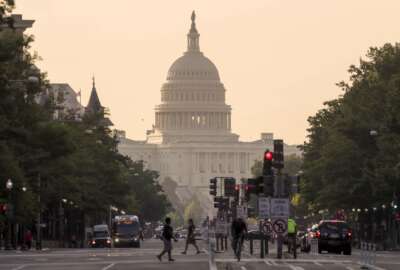
The Greatest Generation remembered
The Greatest Generation, the people who survived the Depression and World War II, is fast disappearing. This month marks the 73rd anniversary of the U.S. campai...
According to some sources, we (the American public) are losing anywhere from 500 to 1,000 World War II veterans each day. Many of us were lucky enough to be the children, or nieces and nephews, of a member of that generation. They survived the Great Depression, only to be tossed into the biggest war in history.
Prior to going on vacation, I asked a dozen regular readers if they would like to write a guest column, subject of their choice so long as the subject was you.
Laurel M. Costen, a retired IRS Counsel employee and retired Navy officer, did this one about her father. Seventy-three years ago (July 21, 1944) he and his fellow Marines retook Guam. It had been occupied by the Japanese after being attacked. She said that the attack on Guam was 4 hours after Pearl Harbor, but due to the International Date Line, Dec. 7 in Pearl Harbor was Dec. 8 in Guam.
Here is his (and her) story, which a lot of us can identify with:
July 21 marked the 73rd anniversary of the liberation of Guam during World War II. It has always been a day that my father, the late Robert E. Costen, remembered throughout his life with both pride and painful memories.
Guam was the only U.S. territory occupied during the war. Guam is the largest of the Marianas Islands, situated about 1200 miles southeast of Tokyo. Guam has been a U.S. sovereign territory since 1898. The Japanese first attacked on December 8, 1941, about four hours after attacking Pearl Harbor, capturing the island on December 10, 1941.
500 Americans became prisoners and were moved to camps in Japan. The approximately 20,000 native people, the Chamorros, suffered greatly under Japanese military rule, with many tortured, abused and executed, until the Americans returned to reclaim the island on July 21, 1944.
On July 21, 1944, the Americans landed. My 18-year-old father was a Browning Automatic Rifleman with the 1st Platoon, Able Company, 1st Battalion, 3rd Marines, 3rd Marine Division. He and his fellow Marines landed on Red Beach 2 near the village of Asan and immediately moved inland to take the high ground in front of them. My dad wrote about the landing: “When we came out of the landing craft, the fire from the ships covering the assault was so intense that the noise was a continuous, unbroken
sound. So many explosions so close together that it was like one big boom.” They fought for three hard days, incurring 80 perent losses before the tide began to turn and another three weeks before the battle was won. (Each BAR man carried 12 magazines of 20 rounds of ammunition. That went fast, and BAR men were also targeted by snipers so each had an assistant, who was not only a potential stand-in, but also carried another 12 magazines of ammo. My dad’s assistant BAR man, Mark Abel, also survived the war and like my dad lived into his 80s.My father, along with most, if not all, of the Marines and soldiers who survived the liberation of Guam with him, have passed on. Guam remembers its liberation each July , and I hope you will remember Guam, the U.S. territory where America starts each day, and the Americans who liberated it in 1944.
—Laurel M. Costen
For more information, go to the website for War in the Pacific National Historical Park.
Nearly Useless Factoid
By Jory Heckman
The human brain is roughly the size of two fists and weighs about three pounds.
Source: HealthyBrainForLife.com
Go to Mike Causey’s Federal Report
Copyright © 2024 Federal News Network. All rights reserved. This website is not intended for users located within the European Economic Area.
Mike Causey is senior correspondent for Federal News Network and writes his daily Federal Report column on federal employees’ pay, benefits and retirement.
Follow @mcauseyWFED





